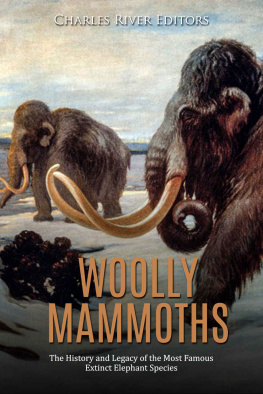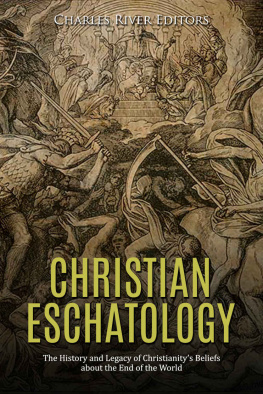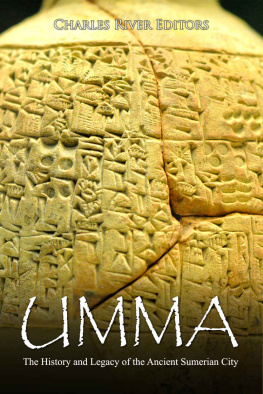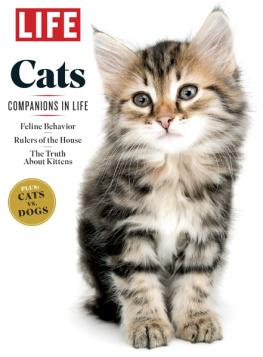Charles River Editors - The Domestication of Cats: The History of the Only Domesticated Felidae Species and Their Relationship with Humans
Here you can read online Charles River Editors - The Domestication of Cats: The History of the Only Domesticated Felidae Species and Their Relationship with Humans full text of the book (entire story) in english for free. Download pdf and epub, get meaning, cover and reviews about this ebook. year: 2020, publisher: Charles River Editors, genre: Science. Description of the work, (preface) as well as reviews are available. Best literature library LitArk.com created for fans of good reading and offers a wide selection of genres:
Romance novel
Science fiction
Adventure
Detective
Science
History
Home and family
Prose
Art
Politics
Computer
Non-fiction
Religion
Business
Children
Humor
Choose a favorite category and find really read worthwhile books. Enjoy immersion in the world of imagination, feel the emotions of the characters or learn something new for yourself, make an fascinating discovery.

- Book:The Domestication of Cats: The History of the Only Domesticated Felidae Species and Their Relationship with Humans
- Author:
- Publisher:Charles River Editors
- Genre:
- Year:2020
- Rating:5 / 5
- Favourites:Add to favourites
- Your mark:
- 100
- 1
- 2
- 3
- 4
- 5
The Domestication of Cats: The History of the Only Domesticated Felidae Species and Their Relationship with Humans: summary, description and annotation
We offer to read an annotation, description, summary or preface (depends on what the author of the book "The Domestication of Cats: The History of the Only Domesticated Felidae Species and Their Relationship with Humans" wrote himself). If you haven't found the necessary information about the book — write in the comments, we will try to find it.
The Domestication of Cats: The History of the Only Domesticated Felidae Species and Their Relationship with Humans — read online for free the complete book (whole text) full work
Below is the text of the book, divided by pages. System saving the place of the last page read, allows you to conveniently read the book "The Domestication of Cats: The History of the Only Domesticated Felidae Species and Their Relationship with Humans" online for free, without having to search again every time where you left off. Put a bookmark, and you can go to the page where you finished reading at any time.
Font size:
Interval:
Bookmark:
By Charles River Editors

An ancient Egyptian mural of a cat eating fish under a chair

Charles River Editors provides superior editing and original writing services across the digital publishing industry, with the expertise to create digital content for publishers across a vast range of subject matter. In addition to providing original digital content for third party publishers, we also republish civilizations greatest literary works, bringing them to new generations of readers via ebooks.
Sign up here to receive updates about free books as we publish them , and visit Our Kindle Author Page to browse todays free promotions and our most recently published Kindle titles.

David Corbys picture of a cat
Pangur Bn and I at work,
Adepts, equals, cat and clerk...
So it goes. To each his own.
No vying. No vexation.
Taking pleasure, taking pains,
Kindred spirits, veterans. - Pangur Bn, a 9 th century Irish poem
Mankind's obsession with felines is an enigma in and of itself. Unlike dogs, famously known as man's most excitable, trustworthy, and loyal friend, cats are oftentimes indifferent, guarded, and yet finicky little furry creatures who only yearn for attention and affection when one is neck-deep in work or otherwise preoccupied. And still, people adore them all the same.
In a recent poll that surveyed 600 American college students, 60% of the participants identified themselves as dog lovers, whereas only 11% pledged their love for cats. The remaining 29% regarded themselves as fans of both critters or fans of neither. Be that as it may, there is said to be anywhere between a staggering 88=94 million pet cats in the United States alone, which eclipses the roughly 84-90 million pet dogs in the country. In the same breath, while more households around the world share a roof with a canine companion, as reflected in the results of this particular survey and most other similar polls, more cat owners have taken it upon themselves to look after more than one pet. This just goes to show that the passion that cat lovers have for their feline friends is evidently comparable with, if not arguably greater than that of dog lovers as a whole.
The Domestication of Cats: The History of the Only Domesticated Felidae Species and Their Relationship with Humans examines the origins of this exceptional bond, including scientific and mythical theories, and explores how cats were domesticated. Along with pictures depicting important people, places, and events, you will learn about the domestication of cats like never before.
Throughout the course of history, the time-honored relationship between humans and domesticated felines has always been as volatile as it is compelling, complex, and inexplicable. Like the arbitrary swings of an inconstant pendulum, cats were initially revered as gods and hallowed, auspicious beings in certain cultures, and in others, as practical, capable little helpers and natural companions. They were then, for some time, vilified as problematic pests and wretched harbingers of misfortune before the return of the glory days, in which they were reverted to prized pets, winsome workers, and even pageant contestants. Cats are in fact now so beloved that they are guarded by their own stringent sets of protection laws all around the globe. What's more, humans of the 21 st century are so smitten with kittens that the International Fund for Animal Welfare officially declared August 8 th International Cat Day in 2002, a day thoroughly dedicated to celebrating our special feline friends.
It may be difficult to wrap one's head around the fact that the domesticated cat has been around for several millennia thousands of years before the invention of the wheel and the Sumerian tongue, otherwise known as the world's first written language and yet, this was precisely the case. To illustrate man's curiously long-established connection to tamed felines, as well as a glimpse of the symbolic roles they played across various cultures, one can examine their appearances in an extensive library of traditional mythology.
One can begin their journey in the Far East with a quirky Chinese folktale centered around Li Shou: the feline goddess of fertility, the sacred exterminator of pests, and the bringer of good harvests. Following the creation of Earth, the almighty pantheon of gods resolved to designate all cats as the guards and governors of all affairs on the mortal realm, essentially serving as the eyes, ears, and judicial fists of the creators. The legion of cats, chosen for their exceptional intelligence and extraordinary intuition, were in turn, left in the care of Li Shou a majestic long-haired cat with marble-white fur dappled with obsidian and a hypnotic pair of amber-colored eyes. Like Li Shou, all cats were gifted the power of articulation so that they could communicate with, and therefore better command their human charges.
Much to the gods' disappointment, the cats Li Shou included overtly and unapologetically shirked their duties, and spent their days sprawled out underneath cherry trees, playfully pawing at tumbling blossoms and snacking on nearby catnip plants, and basking in beams of sunlight, deep in sweet slumber. The gods visited the idle and carefree critters not once, but on three occasions, and each time, found the felines either lounging around or scurrying about aimlessly chasing mice and butterflies without a worry in the world. On their final visit, Li Shou, who had been appeasing the creators with false promises of change, lazily tendered their resignation. The cats, Li Shou admitted, in no way found the notion of presiding over the affairs of the mortals appealing, and would much rather enjoy the simple pleasures of life and allow life around them to take its course. Li Shou pleaded with the gods to entrust the humans they had created with the momentous task of running the material world instead, and for the cats to be left to their own devices.
After some deliberation, the gods announced that they were prepared to accept Li Shou's proposal, but only upon their agreement to a quid pro quo. If the humans were to take on this burden, the cats would consequently be deprived of their power of speech, which would then be passed on to mankind. Li Shou readily concurred to the terms on behalf of the cats, and the rest was history. The cats were collectively demoted to the much more relaxed role of timekeeper a position that all cats continue to hold to this day. It is said that one can still gauge the time of day by gazing into a cat's eyes. In the early hours of the morning, a cat's pupils are indiscernible amidst their ink-black corneas, which are encircled by rings of honey-gold. By noon, their pupils would be reduced to slits, and their corneas lightened to saucers of butterscotch-gold. Come nighttime, their corneas darken once more, returning to gleaming black discs.
Some 1,900 miles east, the Japanese paid tribute to the Manekineko , otherwise known as the Beckoning Cat.
The calico Japanese bobtail, a snow-white feline with wide upright ears and patches of taupe and black fur, continues to be a staple household ornament typically kitted out with a motorized arm that moves back and forth like a drinking bird toy in many Japanese and Chinese homes, as well as traditional restaurants. As the legend goes, the Manekineko once patrolled the entrance of the Gotokuji Temple in what is now Tokyo. One fateful afternoon, a wealthy feudal lord named Li Naotaka, who had been out hunting, decided to duck under a tree to escape the sudden downpour. As he flattened himself against the tree trunk, a strange cat emerged from the temple across the street and raised its paw at Li, seemingly gesturing for him to come forth.
Font size:
Interval:
Bookmark:
Similar books «The Domestication of Cats: The History of the Only Domesticated Felidae Species and Their Relationship with Humans»
Look at similar books to The Domestication of Cats: The History of the Only Domesticated Felidae Species and Their Relationship with Humans. We have selected literature similar in name and meaning in the hope of providing readers with more options to find new, interesting, not yet read works.
Discussion, reviews of the book The Domestication of Cats: The History of the Only Domesticated Felidae Species and Their Relationship with Humans and just readers' own opinions. Leave your comments, write what you think about the work, its meaning or the main characters. Specify what exactly you liked and what you didn't like, and why you think so.

















